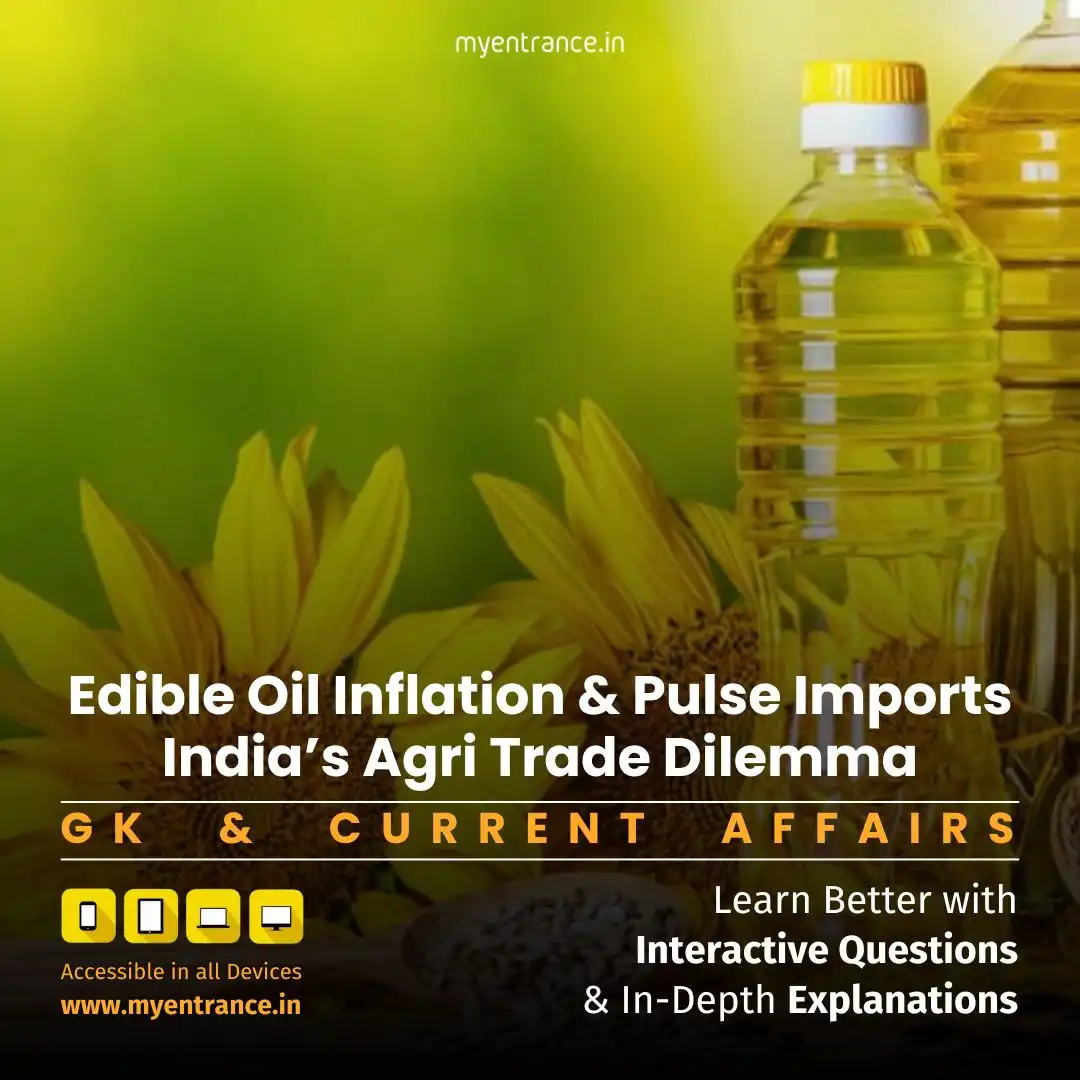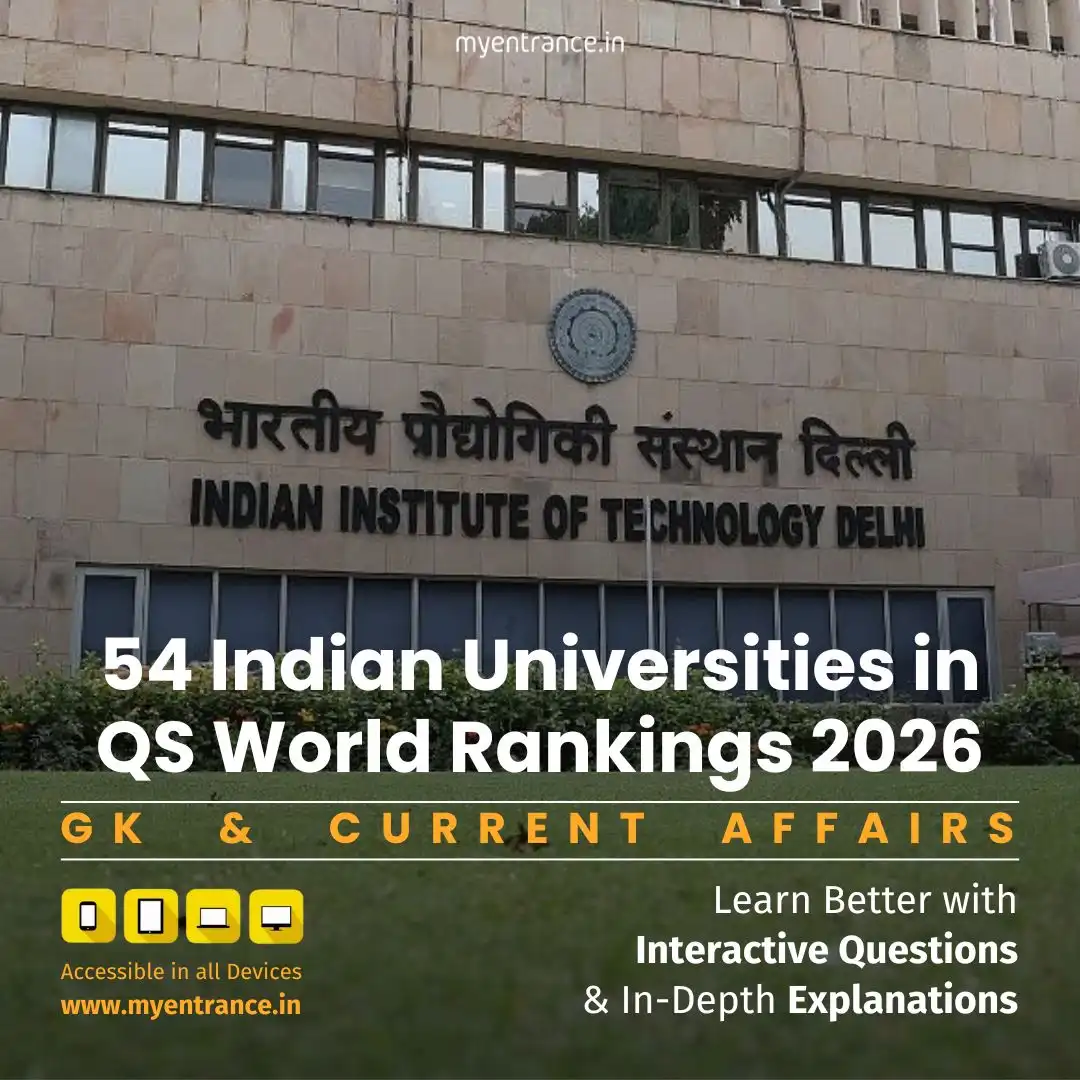Select Language
India’s Pulses & Oil Imports: Impact on Farmers, Inflation & Policy Shifts: Current Affairs
India’s pulses and edible oil imports soared to unprecedented levels in 2024-25, straining farmer incomes and fueling inflation. This article unpacks the policy gaps, market realities, and macroeconomic risks behind this agrarian crisis – vital for UPSC current affairs prep.

The Import Surge: By the Numbers
India’s dependency on imported pulses and edible oils has deepened alarmingly:
Pulses: Imports hit 7.3 million tonnes (worth $5.5 billion) in 2024-25 – surpassing the previous record of 6.6 mt.
Edible Oils: Vegetable oil inflation surged to 17.9% (May 2024), prompting duty cuts on palm, soyabean, and sunflower oil.
Despite rising domestic production (pulses output peaked at 27.3 mt in 2021-22), policy gaps and global price volatility keep imports high.
Why Farmers Are Distressed
Take Rao Gulab Singh Lodi (Narsinghpur, MP):
Harvested 90 quintals of summer moong but receives just ₹6,000/quintal in open markets – far below the MSP of ₹8,682.
Practices multi-cropping: Soybean (kharif), chana/masoor (rabi), and moong (summer). Yet, crashing prices threaten sustainability.
Government procurement remains minimal, leaving farmers at the mercy of traders.
Policy Tangles & Global Pressures
Customs Duty Cuts: May 2024 saw duties on crude edible oils slashed from 27.5% to 16.5% to curb inflation.
Ripple Effects: The Soyabean Processors Association warns this will “flood markets with cheap imports,” making oilseed cultivation unviable.
Global Factors: USDA projects record global vegetable oil output (235 mt) in 2025-26, potentially depressing Indian farm prices further.
Macro Risks & UPSC Hotspots
Inflation-Food Price Link: High crude oil imports raise transport costs, spiking food inflation.
Farm Income Crisis: Low MSP procurement + import surges = reduced profitability for pulse/oilseed growers.
Trade Deficit: Rising pulses/oil imports strain India’s current account.
Cyclical Challenges: Farmers may shift from oilseeds to more profitable crops, worsening import dependency.
“Reduced tariffs will flood markets with cheaper oils, pushing farmers out of cultivation.”
– Davish Jain, Chairman, Soyabean Processors Association
Silver Linings?
Tech Gains: Short-duration pulse varieties (e.g., 60-day moong) enable multi-cropping.
Production Wins: Pulses output jumped from 16.3 mt (2015-16) to 26.1 mt (2022-23). Yet, policy missteps erode gains.
Sample Q&As (Exam-Focused)
Q: Why did India slash import duties on edible oils in May 2024?
A: To combat double-digit inflation (17.9% in May 2024) by boosting supply of cheaper crude palm, soyabean, and sunflower oils.
Q: How does high crude oil import dependency impact food inflation?
A: It raises transport and production costs, which cascade into higher prices for essential goods like pulses and vegetables.
Q: What is the MSP for moong (2024), and why are farmers selling below it?
A: MSP is ₹8,682/quintal, but poor procurement infrastructure forces farmers to sell at ~₹6,000 in open markets.
Q: Name two rabi and two kharif pulse/oilseed crops.
A: Rabi: Chana (chickpea), Masoor (lentil). Kharif: Soybean, Tur (pigeon pea).
Q: Which constitutional article guarantees the Right to Education?
A: Article 21A – mandates free education for children aged 6-14 years.
Most Predicted Questions
Comprehensive study materials, Expert-guided tips & tricks, Mock tests and instant results.
Start your SSC, NIFT, NID, FDDI, PSC journey today with MyEntrance, your ultimate online coaching platform.















